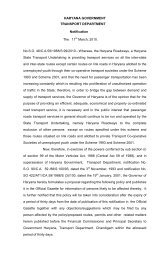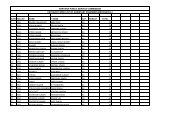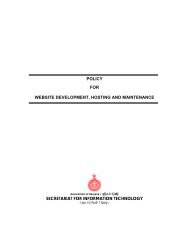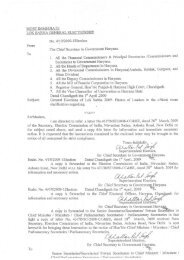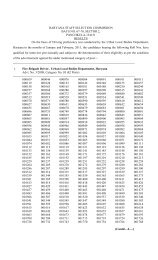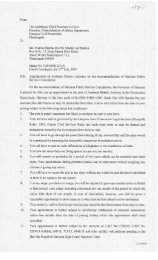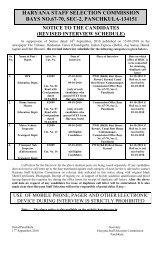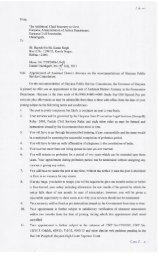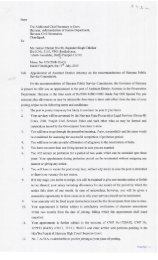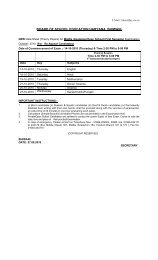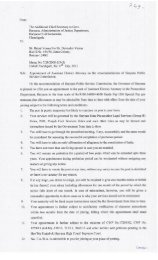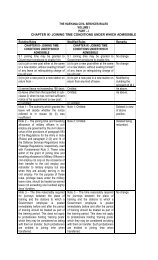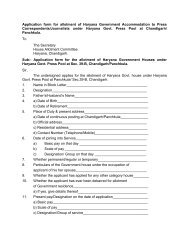Request for Proposal - Government of Haryana
Request for Proposal - Government of Haryana
Request for Proposal - Government of Haryana
- No tags were found...
You also want an ePaper? Increase the reach of your titles
YUMPU automatically turns print PDFs into web optimized ePapers that Google loves.
on the ef<strong>for</strong>t that needs to be expended, dividing the project into phases (as may be deemedappropriate) and assessment <strong>of</strong> project risks. Consultant should work collaboratively with theDepartment and add value in determining a realistic project schedule <strong>for</strong> all downstream workup to the stage <strong>of</strong> completion <strong>of</strong> the eGovernance Project and obtain the concurrence <strong>of</strong> theDepartment.10. Project Cost Estimates & Structuring: An estimate <strong>of</strong> the total project cost on a detailed lineitem basis should be computed. These costs should be categorized into capital andoperational expenditure over a three year period based on approximate market values. Costitems should include all support and personnel costs that would need to be met by theDepartment over and above the payments that are to be made to the Project Implementationpartner, costs related to data migration (if any) and costs associated with certification(s). Cashflow projections based on the estimated cost shall <strong>for</strong>m part <strong>of</strong> this exercise. In addition,Consultant is also required to suggest project structuring alternatives that could be consideredrelevant and feasible.11. Data Migration Plan and Strategy: There needs to be critical mass <strong>of</strong> data when the newsolution goes live. This may involve transfer <strong>of</strong> data both from current system that are inelectronic <strong>for</strong>m as well as paper documents. Additional ef<strong>for</strong>t may be required to map existingdata items to possible new codifications schemes/structures that could be introduced as part<strong>of</strong> the new processes. The guidelines related to the migration <strong>of</strong> data, estimation <strong>of</strong> datavolumes, <strong>for</strong>mats/standards to be adopted <strong>for</strong> data elements (including digitization <strong>of</strong>documents, if applicable), data/document retention period and approach to be adopted inrespect <strong>of</strong> data migration need be laid down by the consultant.12. Project Implementation Strategy: On the basis <strong>of</strong> the findings and the proposals that havebeen made in relation to this project and keeping in view any possibility <strong>of</strong> retaining currentlyoperational s<strong>of</strong>tware applications, s<strong>of</strong>tware Reuse from other States, new custom developeds<strong>of</strong>tware modules (i.e. bespoke) and the need <strong>for</strong> adoption <strong>of</strong> a phased projectimplementation approach, consultant should determine a suitable strategy <strong>for</strong> this project.This will also include the commercial model and project structuring (financial and legal) <strong>for</strong> theproposed engagement. The consultant should also identify an approach <strong>for</strong> data migrationand whether the same would be carried out by the project implementation partner or byanother third external party or through internal resources <strong>of</strong> the Department (with or withouttemporary resource supplementation). Based on the project implementation strategy clearroles and responsibilities <strong>of</strong> various parties involved in the downstream tasks, including that <strong>of</strong>26



